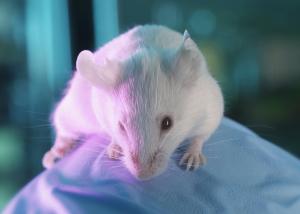White Blood Cells From Cancer-resistant Mice Cure Cancers In Ordinary MiceScience DailyMay. 10, 2006 |
Popular 
FL State Sen. Randy Fine Celebrated Israel Killing an American - Trump Just Endorsed Him For Congress

Poll: 57% of Americans Support Trump Starting Program to Deport All Illegal Immigrants

Trump Nominates Pam Bondi for Attorney General

Russia Advancing in Ukraine at 'Fastest Pace Since Early 2022'

Netanyahu Cries 'Antisemitism' After International Criminal Court Issues Warrant for His Arrest
  White blood cells from a strain of cancer-resistant mice cured advanced cancers in ordinary laboratory mice, researchers at Wake Forest University School of Medicine reported today. White blood cells from a strain of cancer-resistant mice cured advanced cancers in ordinary laboratory mice, researchers at Wake Forest University School of Medicine reported today."Even highly aggressive forms of malignancy with extremely large tumors were eradicated," Zheng Cui, M.D., Ph.D., and colleagues reported in this week's on-line edition of Proceedings of the National Academy of Sciences. The transplanted white blood cells not only killed existing cancers, but also protected normal mice from what should have been lethal doses of highly aggressive new cancers. "This is the very first time that this exceptionally aggressive type of cancer was treated successfully," said Cui. "Never before has this been done with any other therapy." The original studies on the cancer-resistant mice -- reported in 2003 -- showed that such resistance could be inherited, which had implications for inheritance of resistance in humans, said Mark C. Willingham, M.D., a pathologist and co-investigator. "This study shows that you can use this resistant-cell therapy in mice and that the therapy works. The next step is to understand the exact way in which it works, and perhaps eventually design such a therapy for humans." The cancer-resistant mice all stem from a single mouse discovered in 1999. "The cancer resistance trait so far has been passed to more than 2,000 descendants in 14 generations," said Cui, associate professor of pathology. It also has been bred into three additional mouse strains. About 40 percent of each generation inherits the protection from cancer. The original group of cancer-resistant mice, also described in Proceedings of the National Academy of Sciences, successfully fought off a range of virulent transplanted cancers. "Now we know that we can take white blood cells from this strange mouse and put them into a normal mouse and these cells will still kill cancers," said Willingham, professor of pathology and head of the Section on Tumor Biology. "This is therapy in a mouse that does not have this magical genetic inheritance." The transplanted white blood cells included natural killer cells, and other white blood cells called neutrophils and macrophages that are part of the body's "innate immune system." This system forms a first line of host defense against pathogens, such as bacteria. "Their activation requires no prior exposure, but rather depends on a pre-determined mechanism to recognize specific patterns on the cancer cell surface," the researchers said. Moreover, preliminary studies show that the white blood cells also kill "endogenous" cancers -- cancers that spring up naturally in the body's own cells. Cui and Willingham said the research produced many other surprises. For one thing, if a virulent tumor was planted in a normal mouse's back, and the transplanted white blood cells were injected into the mouse's abdomen, the cells still found the cancer without harming normal cells. The kind of cancer didn't seem to matter. A single injection of cancer-resistant macrophages offered long-term protection for the entire lifespan of the recipient mouse, something very unexpected, they said. "The potency and selectivity for cancer cells are so high that, if we learned the mechanism, it would give us hope that this would work in humans," said Cui. "This would suggest that cancer cells send out a signal, but normal white blood cells can't find them." Cui said the findings "suggest a cancer-host relationship that may point in a new therapeutic direction in which adverse side effects of treatment are minimal." The next steps include understanding the molecular mechanism. "The real key is finding the mutation, which is an ongoing investigation in collaboration with several other laboratories," said Willingham. Cui, Willingham and their colleagues also showed that highly purified natural killer cells, macrophages and neutrophils taken from the cancer-resistant mice killed many different types of cancer cells in laboratory studies in test tubes. Besides Cui and Willingham, the team includes Amy M. Hicks, Ph.D., Anne M. Sanders, B.S., Holly M. Weir, M.S., Wei Du, M.D., and Joseph Kim, B.A., from pathology, Greg Riedlinger, B.S., from cancer biology, Martha A. Alexander-Miller, Ph.D., from microbiology and immunology, Mark J. Pettenati, Ph.D., and C. Von Kap-Herr, M. Sc., from medical genetics, and Andrew J.G. Simpson, Ph.D., and Lloyd J. Old, M.D., of the Ludwig Institute for Cancer Research in New York. The primary support for the research came from the Cancer Research Institute, a New York based group founded to foster the science of cancer immunology, on the premise that the body's immune system can be mobilized against cancer. The research also had support from the National Cancer Institute and the Charlotte Geyer Foundation. Editor's Note: The original news release can be found here. |



